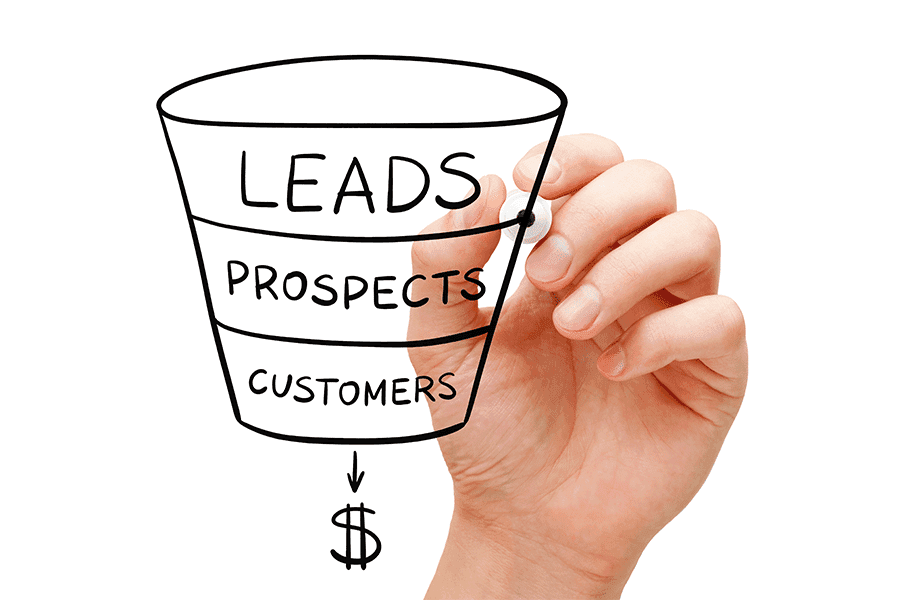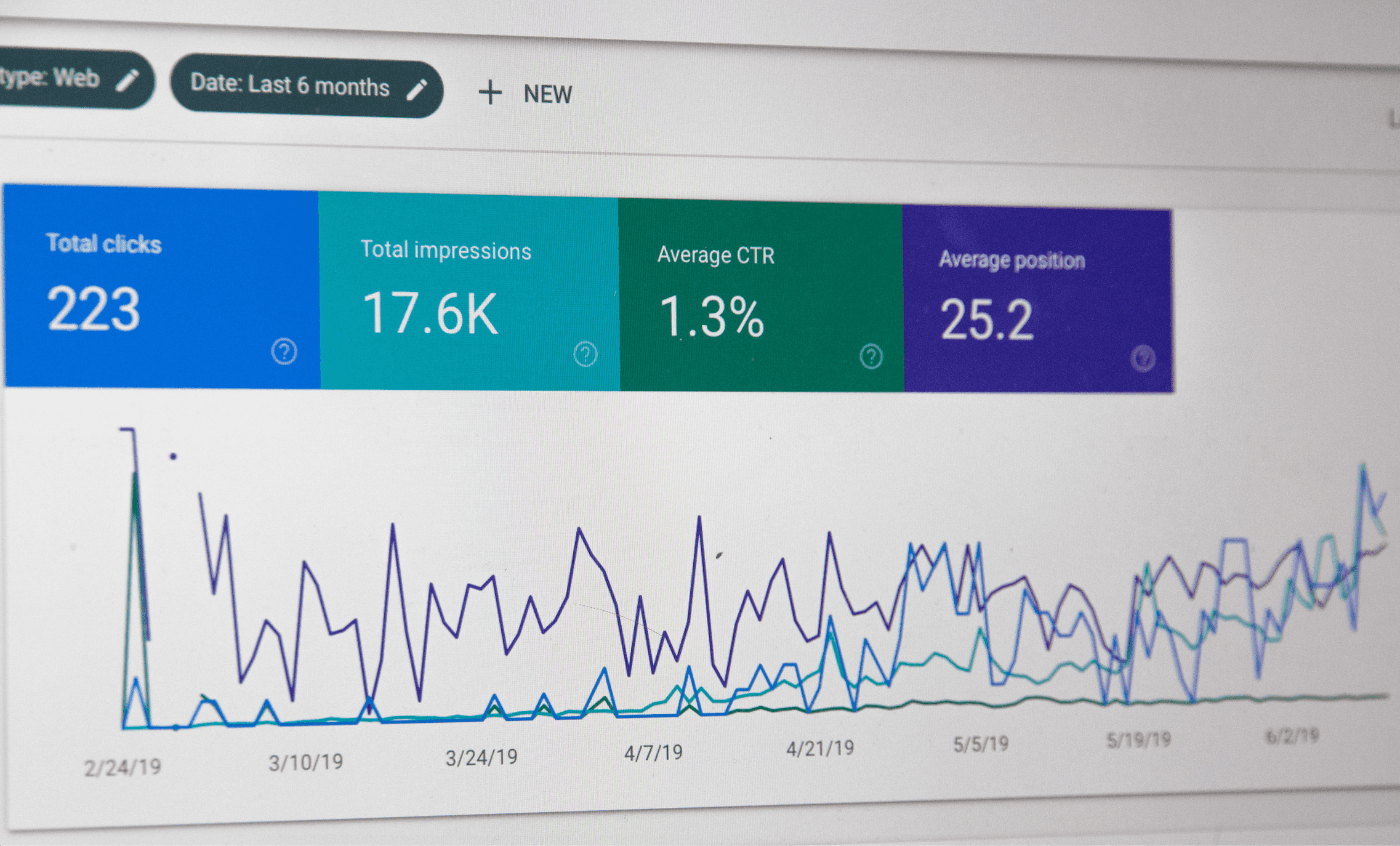How to Optimize Your Online Store for Better Search Engine Rankings

Are you struggling to get your e-commerce store noticed online? Fear not, because SEO (Search Engine Optimization) for e-commerce is here to save the day! This strategy involves optimizing your website with high-quality content and design to improve its ranking on search engine results pages, like Google. By implementing the right techniques, you can increase your store’s visibility and drive organic (unpaid) traffic to your website.
But wait, there’s more! E-commerce SEO goes beyond just stuffing keywords and writing blog posts. You need to understand the inner workings of search engines and what they reward. This means crafting well-written product descriptions that are packed with relevant keywords, obtaining backlinks from reputable sources, and much more.
So, if you want your online store to stand out in a crowded digital landscape, read this article and discover how to use E-commerce SEO to boost your rankings, attract more visitors, and ultimately drive sales.
Coming up:
How To Create An E-Commerce SEO Strategy
1. Conducting Keyword Research
Tools and techniques for keyword research
How to identify high-traffic, relevant keywords for your e-commerce store
2. Optimizing Product URLs to Improve Rankings
3. Optimizing On-Page Product Pages to Improve Ranking
Types of content that can be used in e-commerce stores
5. Building High-Quality Backlinks
6. Improving Site Speed and Mobile Optimization
Key Takeaways
• Conduct thorough keyword research to identify relevant, high-traffic keywords for your e-commerce store.
• Optimize product URLs and on-page product pages to improve rankings.
• Create quality content in various formats, such as product descriptions and blog posts.
• Build high-quality backlinks to your e-commerce store.
• Improve site speed and mobile optimization for a better user experience.
• Long-tail keywords are important for ranking higher on search engines.
• Optimize product images and feature customer reviews to improve rankings.
• Ecommerce SEO is crucial for online businesses looking to drive traffic, increase visibility, and generate revenue.
• A well-planned ecommerce SEO strategy can help your online business stand out in a highly competitive market.
How To Create An E-Commerce SEO Strategy

1. Conducting Keyword Research

Ecommerce keyword research is not your regular keyword research.
While most websites typically focus on informational keywords, ecommerce websites need to go beyond that. Sure, having the most popular and relevant keywords in your industry is important, but understanding the buyer intent behind those keywords is crucial.
You don’t want to just attract any kind of traffic, you want to attract potential customers who are ready to make a purchase.
That’s where e-commerce websites come in – by identifying and targeting the right commercial keywords, they can attract potential customers who are ready to buy.
Tools and techniques for keyword research
As you’ve seen, keyword research is an essential aspect of any successful digital marketing strategy. It allows you to understand the phrases and terms that your target audience is using to search for your products or services. There are several tools and techniques available to help you conduct effective keyword research.
• Google Suggest
This is one easy and cost-effective method to conduct keyword research. Google Suggest is the feature that provides suggestions for related search queries as you type your search term on Google.
It can help you to identify the most common search phrases and queries that your target audience is using to search for your products or services.
By incorporating these phrases into your content and SEO strategy, you can increase your chances of ranking higher in the search engine results pages (SERPs). See example below.

• Ubersuggest
Ubersuggest is a free online tool that can help you to find long-tail keywords and related keywords to your primary topic or keyword. It provides a wealth of data, including search volume, keyword difficulty, and CPC (cost per click) data. With Ubersuggest, you can quickly identify low competition keywords that can help you to rank higher in the SERPs and attract more organic traffic to your website.
• Answer the Public
Answer the Public provides insights into the most commonly asked questions related to your topic or keyword. It’s a great way to uncover the specific queries that your target audience is searching for and to create content that answers those questions. Answer the Public also allows you to explore related topics and phrases, giving you a comprehensive understanding of the language and terminology used by your target audience.
• Ahrefs
Ahrefs is a comprehensive SEO tool that provides keyword suggestions, showcases your ranking, and much more. Ahrefs allows you to conduct keyword research, track your website’s ranking in the SERPs, and analyze your competitors’ strategies. It also provides insights into backlink profiles, site audit reports, and other valuable data that can help you to improve your website’s performance in the search results.
• SEMRush
SEMRush is another powerful SEO tool that provides keyword research insights, tracks your website’s ranking, and offers detailed competitor analysis. SEMRush is particularly useful for PPC (pay-per-click) advertising research, as it provides detailed data on CPCs, ad copies, and competitor ad strategies. It also offers social media analytics, allowing you to monitor your brand’s reputation and engagement across multiple platforms.
Overall, each of these tools provides valuable insights into your target audience’s search habits and the competitive landscape. By incorporating these insights into your ecommerce SEO strategies, you can increase the amount of traffic coming your way, and in turn increase the probability of a sale too!
How to identify high-traffic, relevant keywords for your e-commerce store
As an e-commerce store owner, you’re constantly on the hunt for ways to drive traffic to your website and increase sales. One of the most effective ways to achieve this is by using relevant keywords that resonate with your audience.
But with so many potential keywords to choose from, how do you narrow down your list and focus on the ones that matter most? Here are some tips to help you identify high-traffic, relevant keywords for your e-commerce store.
• Search Volume:
First and foremost, you need to consider the search volume of your keywords. The higher the search volume, the more potential traffic you can drive to your site. Tools like Ahrefs and SEMRush can provide you with volume data to help you make an informed decision.
• Competition:
You also need to look at the competition. If a keyword has high competition, it will be more challenging to rank for it. Most keyword research tools will provide you with keyword difficulty or competition stats, which you can use to gauge how difficult it would be to rank for a particular keyword.
• Relevancy:
Another critical factor to consider is relevancy. You want to ensure that your product or category page is genuinely relevant to the search term. This is a crucial ranking factor that is often overlooked, so it’s essential to stick to keywords that your products can genuinely satisfy.
• Buyer Intent
Finally, you need to evaluate the intent of your keywords.
Intent the reason behind a search query. And in ecommerce, it’s all about identifying the specific phrases and terms people use when they’re looking to buy something online.
Think about it, when was the last time you searched for something on Google without the intention to buy? Probably a lot right? Thes
That’s why we have two types of keyword intent: informational and commercial.
Informational intent
Informational intent is all about providing the searcher with the type of information they’re looking for. This could be a “how-to” guide, a fact or just more information about a subject.
Commercial intent
On the other hand, commercial intent is when people are looking for information to help them make a purchase.
For example, a consumer with informational intent might search for something such as “How to Take Professional Photos” or “Smartphone vs Digital Camera for Photography”, while commercial intent might look something like “Best Digital Camera to Buy”, or “Digital Cameras Under $300”.
As you can see, a consumer with commercial intent already knows what they want, but they need to find the right place to buy it.
And that’s where hopefully, you come in.
2. Optimizing Product URLs to Improve Rankings

As an online retailer, you want to ensure your e-commerce site is not only easy to navigate but also optimized for search engines. And one critical aspect of SEO that’s often overlooked is URL structure.
That’s right, folks, URLs aren’t just a bunch of random characters strung together – they can actually make or break your online presence.
So, what’s the best way to create URLs that are not only user-friendly but also SEO-friendly? Let’s dive in!
• Use Keywords
Firstly, use keywords in your URLs. These are the words people will use to search for your products or services, and search engines take notice of them. For instance, if you sell mountain bikes online, make sure those words are in your URL.
• Breadcrumbs
But wait, there’s more! Breadcrumbs are another essential feature that can boost your website’s SEO. They are like a trail of breadcrumbs, allowing users to retrace their steps and return to previous pages. For example, if you visit a blog post from your main homepage, the breadcrumb for that post would be “Home > Blog > This Post. Not only do they enhance the user experience, but they also provide additional context for search engines to understand your site’s structure and content.
• Avoid Stop Words
However, be mindful of using stop words in your URLs. These are commonly used words like “the,” “and,” or “of” that add little value to your URLs and can decrease readability. Keep it simple, clean, and focused on the keywords that matter.
In conclusion, a well-structured URL can improve the user experience, enhance your social media sharing capabilities, and boost your SEO efforts. So, take some time to think about your URL structure, and make sure it aligns with your overall SEO strategy.
3. Optimizing On-Page Product Pages to Improve Ranking

• Optimize Your Product Images
One way to improve product pages is by adding multiple, high-quality, unique images. Images not only help to break up large blocks of text but also give visitors a better understanding of what they’re getting.
However, you need to strike a balance as too many images distract users from the core thing that brought them there.
Here are some pointers for optimizing your images:
– Choose suitable images for your platform. Your host usually specified[source]s optimal image sizes and other image guidelines.
– Provide captions with alt tags for pictures.
– Use the right keywords in file names
Don’t settle for just one boring image – showcase your product from multiple angles with high-quality, unique photos. And make sure to include detailed descriptions that are chock-full of relevant keywords to improve your visibility in search results.
• Feature Reviews
It’s not just about aesthetics with product pages though- you need to build trust with your customers too. That’s why featuring reviews on your product page is crucial. Reviews provide valuable insights from real people who have already purchased your product, giving potential customers the confidence to make a purchase.
Here are a few pointers:
– Encourage customers to leave reviews by providing an easy-to-use review system.
– Offer incentives like discounts or free shipping for leaving a review.
– Display reviews prominently on your product page to build trust with potential customers.
– Respond to reviews, both positive and negative, to show that you value customer feedback.
4. Creating Quality Content

Did you know that regular content updates can work wonders for your SEO strategy? Not only can it attract organic traffic, but it can also help build your customers’ trust, improve your website rankings, and establish your reputation as an expert in your niche.
So, let’s explore some of the exciting types of content you can use to enhance your e-commerce store!
Types of content that can be used in e-commerce stores
• How-to Guides & FAQs
First up, how-to articles and FAQs are an excellent way to engage with your audience and provide them with valuable information. Share your expertise and guide them through the ins and outs of your products or services.
• Product Updates
Why not create a buzz around your new launches and noteworthy updates? Keep your customers in the loop, and they’ll feel more connected to your brand.
• Glossary
To make your store stand out, consider adding a glossary page that explains industry jargon in simple terms. It’s a great way to educate your audience and show them that you’re invested in their understanding of your products.
• User-Generated-Content
Another powerful tool is user-generated content (UGC). Encourage your customers to share their experiences with your products, and watch your online presence grow.
• Testimonials & Reviews
Lastly, don’t forget the power of testimonials and customer reviews. They can be a game-changer when it comes to building trust with potential buyers. Share the positive feedback you receive and let your happy customers do the talking for you.
5. Building High-Quality Backlinks

One of the key factors that can determine the success of your online business is how well your website ranks on search engines. And one of the most important elements in boosting your website’s ranking is the use of backlinks.
So, what are backlinks exactly?
Simply put, they are links on other websites that lead to your website. And the more high-quality backlinks you have, the better your website will rank in search engine results pages (SERPs).
But here’s the catch: not all backlinks are created equal. In fact, some backlinks can actually harm your website’s ranking if they are low-quality or spammy.
It’s important to remember that quality is more important than quantity when it comes to backlinks. So, avoid taking shortcuts like buying cheap, spammy links. Not only will they harm your website’s ranking, but they can also damage your reputation.
So, how can you acquire high-quality backlinks for your e-commerce store? There are several strategies you can employ, and they all require time and effort. But trust us, the results are worth it!
• Creating internal backlinks
One effective way to build backlinks is by creating internal links on your own website. This means linking to other pages on your website from within your own content. This not only helps with navigation and user experience but also tells search engines that your website is a valuable resource.
• Writing guest posts
Another strategy is writing guest posts for other websites in your industry. By providing valuable content to other websites, you can gain exposure and earn backlinks to your own site. This also helps establish you as an authority in your niche.
• Using social media ads
Social media can also be a powerful tool for building backlinks. By using social media ads and sharing your content on social media platforms, you can attract more visitors to your website and increase the likelihood of earning backlinks.
• Public Relations
Issuing press releases, writing blog comments and sharing on forums, creating infographics and whitepapers, and issuing case studies are also effective ways to acquire high-quality backlinks.
6. Improving Site Speed and Mobile Optimization

In today’s digital age, having a fast-loading website is no longer an option but a necessity. People want quick access to information and will quickly lose patience with a site that takes too long to load.
So, why is your site taking forever to load?
There could be several reasons. Perhaps your site is overloaded with content, or you have too many scripts running in the background. Maybe the images on your site are taking an excessive amount of time to load, or there’s a problem with your web host.
Whatever the cause may be, the good news is that you can take steps to improve your site speed and mobile optimization.
• Reduce Media
One easy fix is to reduce the number of images, videos and media files on your pages and compress your files. This can significantly decrease your page load times.
• Limit redirects & HTTP Requests
Another option is to limit redirects and HTTP requests. Every time a user clicks on a link or an image, it sends a request to the server, which takes time to process. By limiting the number of requests, you can speed up your site significantly.
• Optimizing Images
Optimizing your images is also crucial. Make sure you’re using the correct image size and file format. Large images can slow down your site, so it’s essential to compress them without losing too much quality.
• Avoid Clutter
You should also avoid clutter on your pages and use plenty of white space. This can make your site look clean and uncluttered, which can improve the user experience.
• Assess Your Hosting
Finally, you may want to consider upgrading your hosting package or switching web hosts altogether. A faster server response time can make a significant difference in your site’s speed.
Overall, by taking these steps, you can significantly improve your site speed and mobile optimization, which can enhance your user experience and drive more traffic to your site. Don’t let a slow-loading site hold you back from reaching your full potential.
Conclusion

Creating an e-commerce SEO strategy is crucial for any online business looking to drive traffic, increase visibility, and generate revenue.
As a recap, the key components of a successful ecommerce SEO strategy include conducting thorough keyword research using tools and techniques to identify high-traffic, relevant keywords for your e-commerce store, optimizing product URLs and on-page product pages, creating quality content in different formats, building high-quality backlinks, and improving site speed and mobile optimization.
In addition to the above, it is essential to understand the importance of long-tail keywords and how they can help you to rank higher on search engines.
Similarly, optimizing product images and featuring customer reviews can help to improve your online store’s rankings.
Moreover, while it is important to focus on SEO, it is equally vital to ensure that your e-commerce store provides an excellent user experience. This includes optimizing your site speed and mobile responsiveness to provide a seamless browsing experience for your customers.
In conclusion, a well-planned ecommerce SEO strategy can help your online business stand out in a highly competitive market. By focusing on the key components outlined above, you can improve your online store’s visibility, drive traffic, and ultimately increase sales.
Therefore, it is highly recommended that you invest in ecommerce SEO to stay ahead of the competition and grow your online business. If you are looking for help creating SEO articles and ranking your eCommerce store, simply contact SeedX today!








